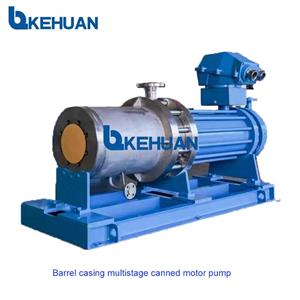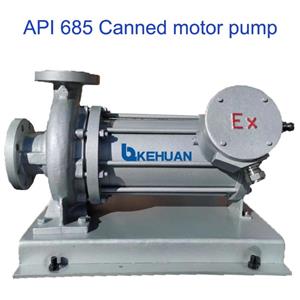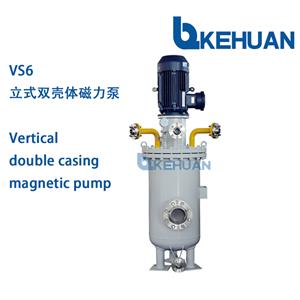Sealless Pumps Save Lifetime Costs by Reducing Failures
Magnetic couplings improve reliability and safety when pumping hazardous fluids.
Sealless centrifugal pumps with a magnetic coupling have become more popular among end users in the chemical industry. Rare earth magnets have reduced the costs associated with magnetic couplings by decreasing magnet mass and required horsepower. This innovation has lowered the cost of not only the coupling, but also the overall operating cost.
Seal Failures
Seal failure is one of the most common causes of pump maintenance and downtime. If the seal fails, fluid escapes along the shaft that connects the motor to the impeller. Even when maintenance is scheduled before a failure, the pump must be taken out of service to replace the seal.
While mechanical seal technology has improved over time, the innovations often require additional equipment. Double mechanical seals, either back to back or in tandem, are common for harsh conditions such as chemical pumping. Maintaining the barrier fluid in these designs often means purchasing barrier fluid tanks, controls and even additional pumps. Gas seals are another option, but also require supporting equipment that poses the risk of failure.
Wider Acceptance
At first, end users only considered sealless pumps when handling environmentally hazardous or lethal fluids. The initial cost of a magnetically coupled pump far exceeded that of a conventionally sealed design. However, as time passed, operators became more concerned with total cost of ownership than preliminary capital outlay.
Magnetically coupled pumps began to show a true cost advantage. Sealless designs replaced mechanically sealed pumps that required yearly removal for maintenance. Service intervals and mean time between failures extended. Environmental emissions decreased, and end user safety improved.
Operators now consider sealless pumps for services that, just a few years ago, they would not have—non-hazardous, but still difficult and costly to seal.
How Sealless Pumps Work
In centrifugal pumps, the pump shaft transmits torque from the motor to the impeller. A seal prevents the pumped fluid from escaping down the shaft. The seal includes two parts, one stationary and the other rotating. Seal faces are typically made of carbon, tungsten carbide or silicon carbide (SiC).
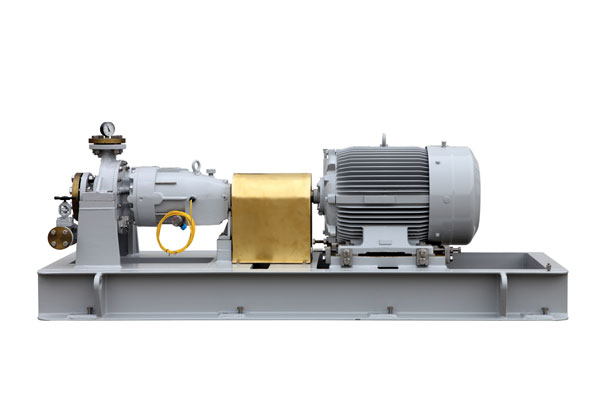
More and more end users are installing sealless pumps for chemical applications. The reduced cost of magnetic couplings makes this technology an affordable choice for hazardous fluids.(Images and graphics courtesy of Dickow Pump Company)
In a magnetic sealless pump, the motor torque rotates a magnet carrier, or drive magnets. The torque is transmitted though a containment shell to an inner magnet, or driven magnet. The magnet delivers the torque to the impeller.
The magnetic field creates eddy currents when it passes through a metallic container. Ceramic shells prevent eddy currents, but can only contain a limited pressure. These eddy currents create heat directly between the magnets, and this heat must be dissipated.
Flow paths—a combination of passageways through the pump shaft, the housing or both—carry away the heat in the pumped fluid. The liquid travels from the pump discharge to the driven magnet and back to either the suction or discharge. The fluid can affect the net positive suction head if returning to the suction end.
A rear impeller on the driven magnet keeps the fluid under a higher pressure after absorbing heat from the eddy currents. The pressure protects volatile fluids from flashing after heat is added in the container. The rear impeller eliminates the need for utility cooling or costly piping to return the fluid to the suction tank.
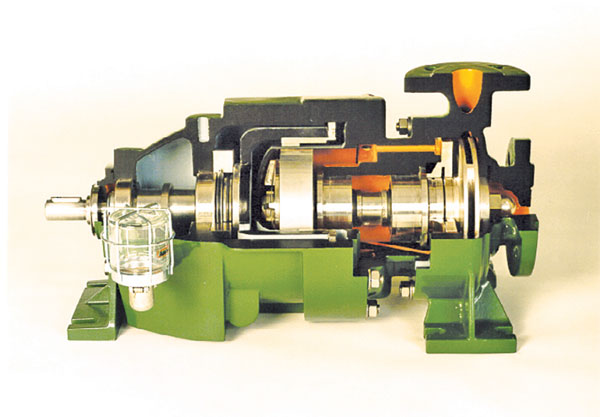
Sealless pumps deliver torque to the impeller through a series of magnets within a containment shell. The pumped fluid carries away the heat generated by the magnets during operation.
Managing Thrust
In sealless pumps, wet end thrust balance is vital. The wet end floats, so shaft sleeves and sleeve bearings must handle the radial thrust from the impeller and rotating wet end. A stable fluid film and hydrodynamic force support the shaft assembly. The fluid does not lubricate the bearings because they do not come into contact.
Axial thrust loads can pose risks during system upsets. The wet end is designed to reduce axial force from the pump, but startup rings, or axial thrust bearings, are often employed when the system experiences changes. When the gap between a startup ring and mating surface closes, the force from the other startup ring increases. If the suction pressure surges suddenly, the front startup ring gap would close and the rear startup ring gap would open. The pump automatically produces a counterbalancing force in the direction of the pump suction. When paired with silicon carbide (SiC) bearing surfaces, this design allows for the wet end to have no parts that would be considered routine maintenance parts.
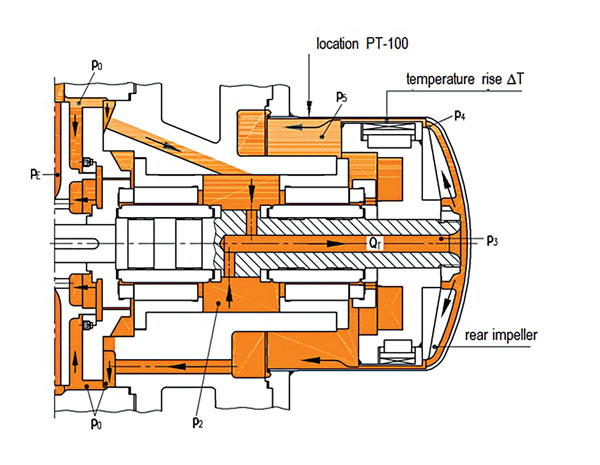
Detailed internal circulation flow path for pump with rear impeller allows for pressure increase prior to heat input.
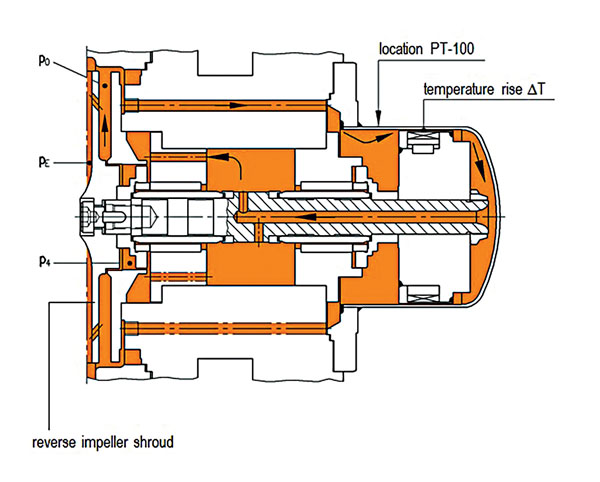
Detailed internal circulation flow path for pump with impeller injection bores allows for fluid to remain above suction pressure.
The wearing surface of the shaft sleeves, sleeve bearings and startup rings is commonly made of carbon or SiC. The hardness, wear and heat tolerance of SiC make for the best material and are suitable for nearly any application. A coating similar to diamond dust on the SiC surface enhances lubricity and extends life, in case the liquid flow and stable film are disrupted.
Sealless pump manufacturers use several materials for the wetted parts, ranging from cast iron to nickel alloys, depending on the service. Some common materials include ductile iron, carbon steel, 316 stainless steel and duplex stainless steel. Wetted areas, even entire pumps, are now being made from thermoplastics. These materials perform well when pumping corrosive fluids, but encounter serious limitations in high-pressure or high-temperature applications.
Harsh applications often demand a nontraditional approach. When selecting pumps for chemical and petrochemical processing, facility managers should keep an open mind about how to best face the challenges of sealing and pump maintenance. Sealless pumps improve reliability, extend mean-time between failures and reduce total cost of ownership. This technology can have a significant impact on savings and safety in any facility, no matter the application.

